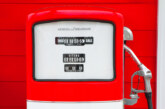Technology has come a long way since London’s first motor bus was used in 1898, but are bus and coach operators making the most of the technology available to improve passenger safety and avoid unnecessary damage? CVW spoke with tyre pressure monitoring specialist, TyrePal, to find out what options are available.
Peter Tillotson, Business Development Manager at TyrePal, discusses three key technologies that contribute to improved passenger safety and reduced downtime for bus and coach operators.
Braking systems
Suspension, weight distribution and steering are a few factors that may not seem important, but can drastically affect road handling. On top of this, the most important accident prevention equipment on board is the braking system.
Recently, automotive manufacturer Volvo announced the introduction of its electronically controlled disc brakes, which are designed to provide rapid and comfortable braking, with power divided efficiently between each wheel. The brake discs expand symmetrically when hot to help minimise uneven wear. In addition, there are a number of safety features built into the braking system. For example, Hill Start Aid prevents the vehicle rolling backwards when starting on hills, as the brakes do not release until there is enough power to drive the vehicle forward.
Electronically controlled disc brakes also come with the ability to continuously monitor the condition of the brake pads and disc brake temperature. This allows the driver to make any necessary replacements before the vehicle and passengers are put in jeopardy from poorly performing brakes.
Adaptive cruise control
The speed that a bus or coach travels at is often underestimated and drivers don’t stick to standard braking distances. Adaptive cruise control (ACC) is an assisted system that constantly measures the distance between the bus and vehicles ahead.
During regular driving, the speed is controlled by the system, giving the driver a safe distance ahead without the need to apply the footbrake. If the distance between the bus and the vehicle ahead drops significantly, the system gives a warning signal for the driver to slow down.
There are two types of ACC systems — laser-based and radar-based. Laser-based systems do not detect and track vehicles in adverse weather conditions, nor do they track extremely dirty vehicles, due to them being non-reflective. The laser must also be exposed and is generally found in the lower front grille.
Radar-based systems use radio waves to determine the distance between the bus and the car ahead. They can be used in a wider range of environments and conditions and are therefore the preferred model.
Tyre pressure monitoring
Many vehicles are driven with under-inflated tyres and buses and coaches are no exception. This can have detrimental effects on passenger safety, especially if a tyre blowout was to occur as a result.
A tyre blowout can be caused by a combination of low pressure and increased temperature. When a longer vehicle suffers a blowout, it is more likely to swerve across lanes, increasing the chances of a collision. This is why it is particularly important for bus and coach fleet managers to monitor tyre pressure consistently.
Tyre pressure monitoring systems (TPMS) help both drivers and depot managers keep track of tyre pressure. Products like TyrePal’s driver alert system inform the driver when tyre pressure is falling due to a puncture and when tyre pressure is too low or temperature too high.
Bus and coach fleets can rely on a remote monitoring system, such as TyrePal’s TeleTPMS. This way, depot managers can see the location of all the vehicles in the fleet, with status indicated at a glance. The user can immediately identify any tyres that require attention and instantly view the condition of each individual tyre.
Electronically controlled disc brakes, assisted cruise control and tyre pressure monitoring systems all have one thing in common — continuous monitoring. Driving conditions can change in a split second, so giving drivers the ability to make instant decisions in response to these changes is the key to keeping passengers safe and ensuring the vehicle is not damaged. While new technologies for buses may seem like an unnecessary investment, they could contribute to saving lives and protect fleets of buses from unnecessary damage and therefore downtime. The buses and coaches of the future will be safer, smarter and more comfortable.









